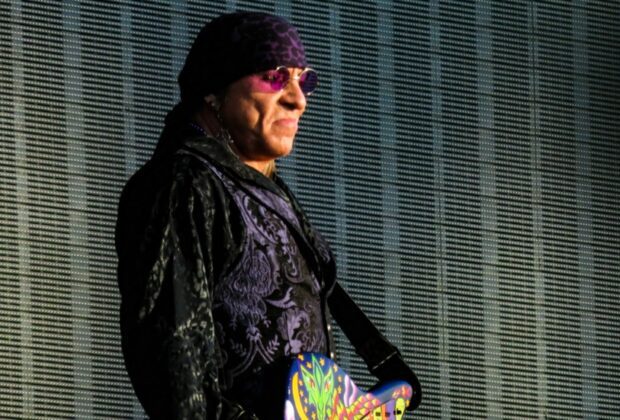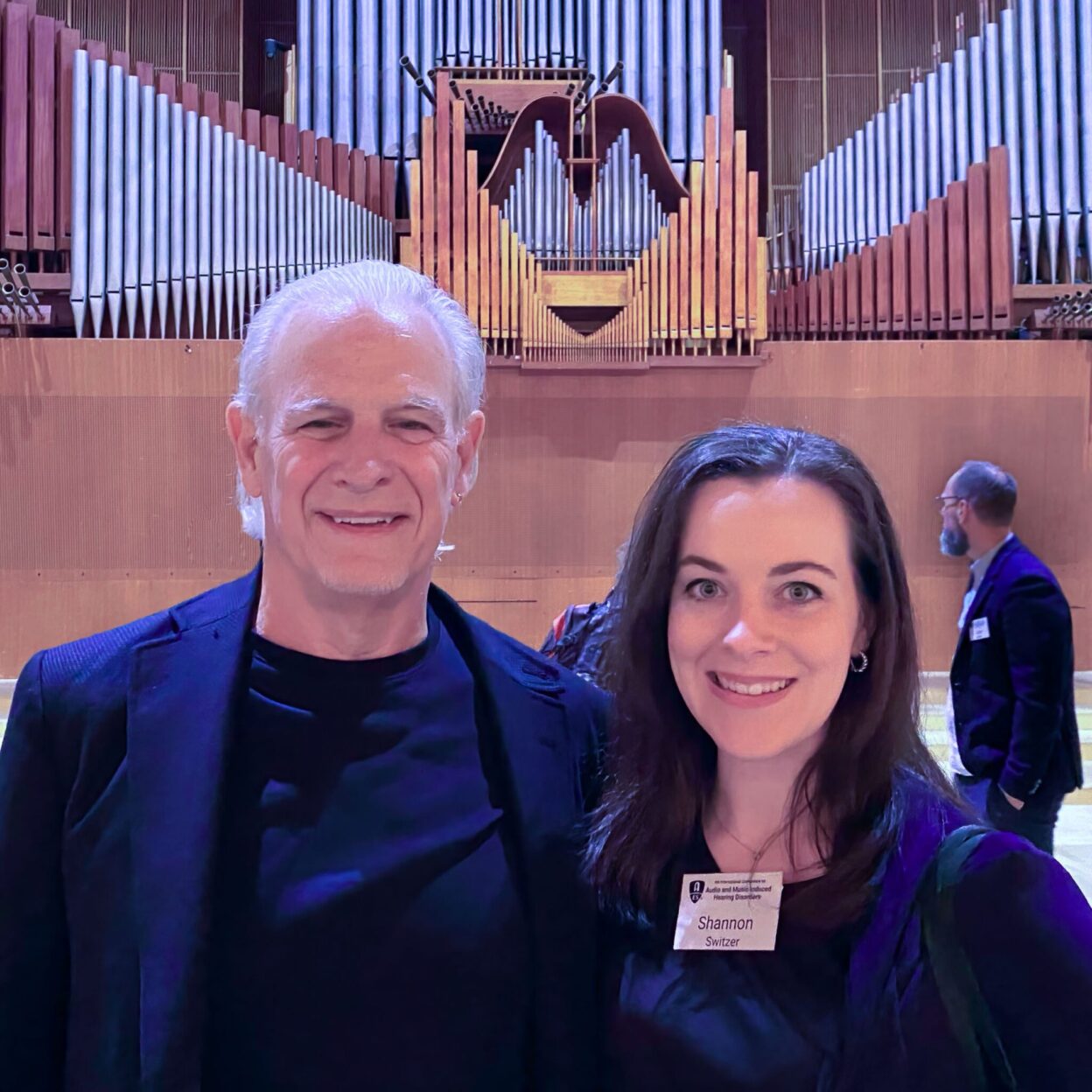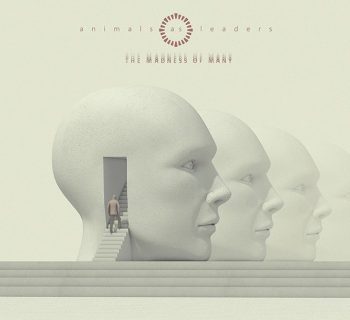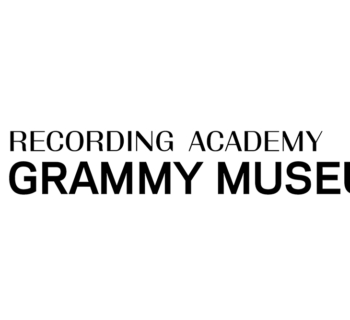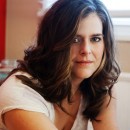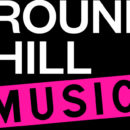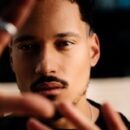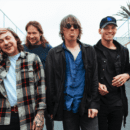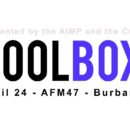The HBO Original documentary STEVIE VAN ZANDT: DISCIPLE, directed by Bill Teck, debuted SATURDAY, JUNE 22 on HBO and will be available to stream on Max. The documentary had its world premiere at the 2024 Tribeca Festival.
Stevie Van Zandt, known as New Jersey’s most famous consigliere to Bruce Springsteen and Tony Soprano, takes center stage in this feature documentary. Featuring a wealth of never-before-seen footage, the film traces Van Zandt’s career as a producer, musician, songwriter, activist, actor, and more, from the clubs of Asbury Park, N.J. to arenas and stadiums, to the Bada Bing Club and the Underground Garage.
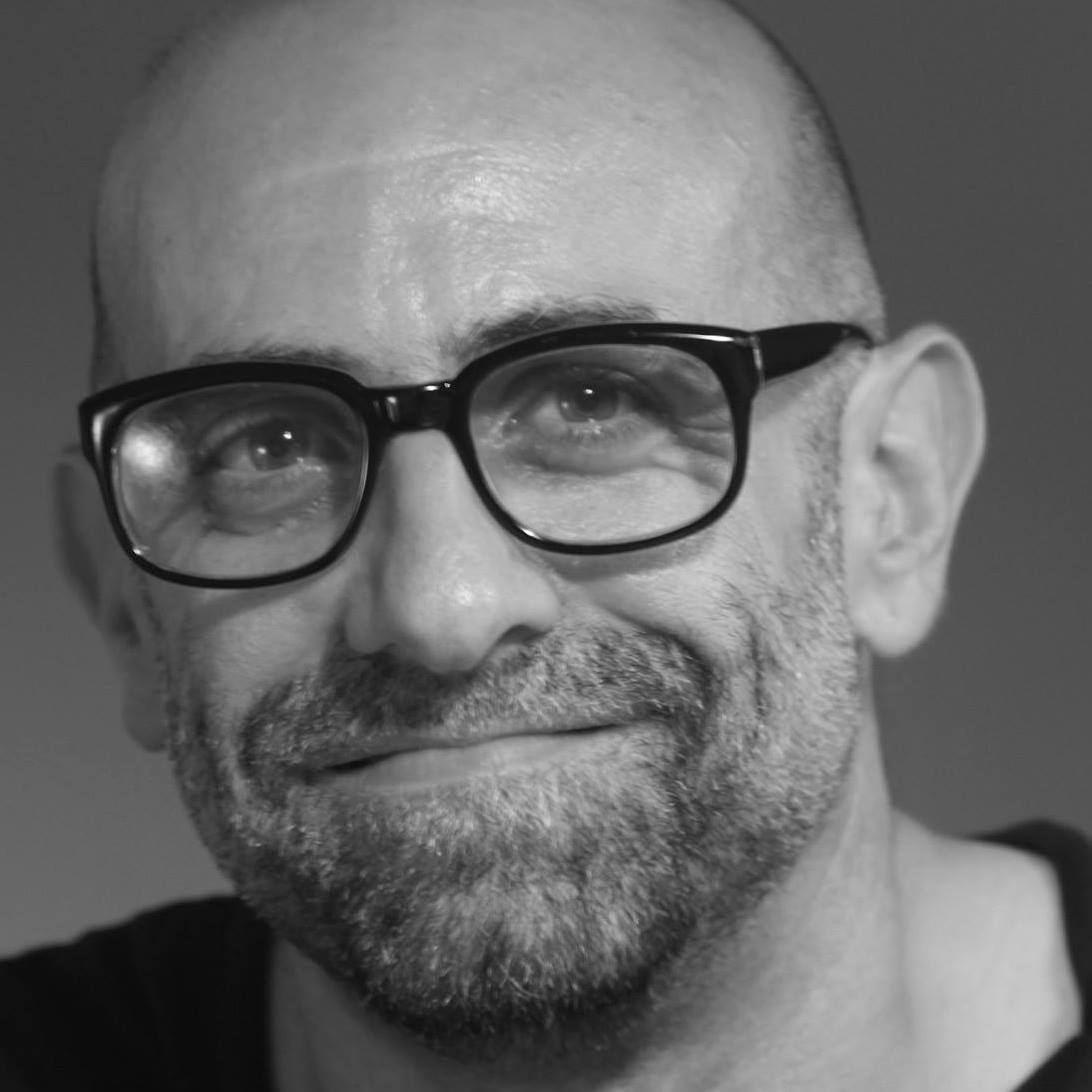
An HBO press release describes the documentary.
“A portrait of a true renaissance man and passionate activist, STEVIE VAN ZANDT: DISCIPLE chronicles the artist throughout his remarkable career while illuminating the influential and enduring legacy he continues to have as a fervent champion of rock ‘n’ roll and social justice.
“The documentary features exclusive interviews with many of Van Zandt’s contemporaries, peers, collaborators, and friends, including Bruce Springsteen, Darlene Love, David Chase, Vincent Pastore, Bill Wyman, Peter Gabriel, Joan Jett, Ruben Blades, Richie Sambora, Eddie Vedder, Gary U.S. Bonds, Southside Johnny (John Lyon), Paul McCartney, and Bono.
“Filled with insight from luminaries within the music, film, and political circles that Van Zandt toggles between, this revealing film explores the many facets of Van Zandt, including his vital collaborations on many Springsteen albums, his departure from the E Street Band at the height of their fame and his work as front man of Little Steven and the Disciples of Soul.
“The film tells the story of the galvanizing role he played in uniting 50 of the biggest names in music in 1985, across rock, hip hop, reggae, Latin, and soul genres, to create the history-altering “Sun City” track in protest of Apartheid South Africa. The documentary also highlights his acclaimed on-screen role as the legendary Silvio Dante in the Emmy®-winning HBO Original series The Sopranos.”
In summer 2024, touring once again with Bruce Springsteen and the E Street Band, Van Zandt has also found well-deserved success and influence as the host and curator of the satellite radio station Underground Garage and other channels, director of a television drama series, Broadway producer, and education evangelist.
Launched by Van Zandt with the Founders Board of Bono, Jackson Browne, Martin Scorsese, and Bruce Springsteen, Teachrock.org has provided free, standards-aligned resources to help teachers, students, and families succeed for more than a decade. TeachRock improves students’ lives by bringing the sound, stories, and science of music to all classrooms. From The Beatles to Beyoncé, from kindergarten to AP History, in the classroom or remotely, TeachRock offers meaningful lesson plans all at no cost to teachers, students, and families, inspiring deeper learning and understanding through the power of music.
An article I wrote in 2011 for Record Collector News magazine, With A Little Help From His Friends: George Harrison And The Concert For Bangladesh, is displayed on the TeachRock website. https://teachrock.org/article/with-a-littl…
Steven continues to make a resounding impact, remaining at the forefront of artistic excellence and popular culture for over five decades.
Later this year, Van Zandt will also appear in the documentary Road Diary: Bruce Springsteen and the E Street Band, which goes behind-the-scenes of the E Street Band's tour preparation process, premiering on Hulu and Disney+ this October.
In 2021, Van Zandt’s autobiography Unrequited Infatuations: A Memoir was published by Hachette Books. It was an international bestseller. During 2016 Van Zandt narrated Bang! The Bert Berns Story and the following year he was on screen in Rumble: The Indians Who Rocked the World.
Director Bill Teck is known for directing the Peter Bogdanovich documentary One Day Since Yesterday: Peter Bogdanovich & the Lost American Film whichfeatures Wes Anderson, Quentin Tarantino, Jeff Bridges, Noah Baumbach and many more.
As producer/exec producer or director, Teck is responsible for television programs for USA Broadcasting, PBS and NBC television including A Peña Family Album: The Best of Que Pasa USA, Content Miami, Cafe Con Leche II, Nuestra Risa, ñ Life with Melissa Hernandez, Outloud and Latin Access.
Teck and his producers David Fisher and Robert Cotto really take us into the world of Steven Van Zandt.
HBO Documentary Films presents STEVIE VAN ZANDT: DISCIPLE, a Tones & Chords Production. Directed and produced by Bill Teck; produced by David Fisher and Robert Cotto; executive producers, Craig Balsam, Chris Stadler, C. Winston Simone, David Simone, and Ryan Celli; For HBO: executive producers, Nancy Abraham and Lisa Heller; supervising producer, Anna Klein.
In June I conducted an email interview with Bill Teck about his powerful and inspiring endeavor.
Q: What first drew you to embark on a documentary on Steven?
A: I was aware of Stevie from an early age. I grew in Miami Florida and there was a music (and movie) critic that wrote for the (now sadly defunct) Miami News named Jon Marlowe who was a big fan of Steven and praised all the records he did. In Miami you were a Miami Herald family or a Miami News family. We were a Miami News family, and he was my fave critic and I hung on every word he wrote.
He'd write that Stevie was making the most important music being made and he'd write about the brilliance of the Men Without Women album or about Voice of America or even about the single he released ‘Vote! (That Mutha Out)’ at the height of the Regan era - and I'd ride my bike to my local record store (Yesterday and Today Records) and get his music.
I became aware of him through Marlowe at about 13 and went back and listened to the Southside Johnny albums and the I knew Little Steven was also Miami Steve but... it was just… confusing, in a very rock n roll, cool, mysterious way. But I followed his career my whole life and when I became a filmmaker, I tried for years to get him to allow me to make this movie.
First in 2006 through Nicole Barsalona, his assistant at the time, later on I tried again in 2014 after I had some success with my previous doc (One Day Since Yesterday: Peter Bogdanovich and The Lost American Film) and still got the same answer, "we're aware of you, we're flattered but if we ever want to pursue this, we'll be in touch" - but I just kept at it - I got in touch with his wife, and convinced her to convince him to meet me for a glass of wine, and two hours later, he still wasn't convinced.
But somehow, after a few more meetings, I got a yes - and we were off to the races. I wanted to capture all the moments of Stevie's career in the way that a fan would experience it, the early rush of fame, the 'walking the dog years,' where as a fan I'd search the internet to try and find any news about him ... and then all of a sudden… he's on The Sopranos. What?! and then The E Street Band is reunited! and he puts out his record Born Again Savage and he starts his Underground Garage radio show - but it all happens so fast it seems to be one thing on top of the other. I wanted to capture all those feelings one had watching the phases of his career - but also to make it exciting for people who knew nothing about his work and were just interested in a great story, (with great music) about a true original.
Q: What were some of the revealing revelations you were discovering in the process of shooting.
A: I knew his story, and I was eager to tell it - but I was surprised by what wasn't available, he had never seen his wedding video and claimed it was lost and that was it - there was no way we'd find that for our film. But I remember reading about his wedding in Rolling Stone magazine, as Jesse Malin says in the movie, with Little Richard performing the ceremony and Percy Sledge singing “When A Man Loves A Woman” and Springsteen as the best man, and I wanted so bad to see it in the movie - In his book he talks about never having taken a picture with Nelson Mandela, I hoped there was a chance these things existed - and one of the film's producers Rob Cotto, who I worked very closely with on the music - is also a great archivist and researcher and he was tireless in his pursuit of this stuff - he wouldn't stop until he'd find things, and after months of looking, there - at the bottom of a rubber maid bin from the back of a storage unit Stevie had Rob uncovered some old VHS tapes of movies Stevie and his wife Maureen had taped from TV - and in that box... was the wedding video. 6 hours of it.
Rob also miraculously found the tape of his reception for Nelson Mandela at Tribeca Grill in New York with Robert DeNiro and Spike Lee. And Thom Zimny slipped us great footage of Stevie, Bruce and Southside Johnny at the Stone Pony back in 1976, that he'd found in the vaults and thought maybe we could use it. These were just fantastic gifts that really propelled the film forward. DJ Rich Russo found the original Rough Cut of Men Without Women, Stevie's indie that he shot in the early 80s so all of that really helped our movie out aurally and visually.
As far as the interviews I was just impressed with how eager people were to talk about Steven and what he meant to them as an artist and as a human being and/or a friend - Eddie Vedder was truly stoked to be talking about an artist that he'd clearly admired for years but maybe had not had an opportunity to talk about.
I knew Eddie was a fan from reading about him covering some of Stevie's music at one of Neil Young's Bridge Benefit shows - so I knew he was a fan going into it - but...it was really fun to just talk Stevie music with him all night. We were supposed to wrap the interview up by 8pm and at 4AM we were still playing Stevie music and talking. It was one of the great experiences. But also, Jon Landau, Ruben Blades, Springsteen, David Chase, you could see they were really pleased to be talking about someone they really appreciated and were eager to talk about.
Q: As you assembled all the footage for editing, did you have any inherent philosophy or process about editing? Is it a harder task when you have such an energetic personality as Steven where his initial identity to us is a musician?
A: My approach is I transcribe every word, then group the questions and answers by categories - ex: Sun City, Asbury Park, Politics, etc... then highlight who I think has the best or most descriptive quote on something, then I fashion a script out of it. My editor Lara Fox and I go in and lay it all out - then put the B-roll and music over it and between it but that was the story is all there - foreshadowing, bookends where characters we've seen earlier in the movie come back towards the end, some little wrap ups for our fave interview subjects, trying to tie all the threads together and ideally include a few call backs to the early part of the film.
Originally, I wanted to make a three parter -and indeed I cut a three part film, well… then I settled for a two parter, which we also cut and finally - I settled on a big 'ol unwieldy, longish rock n roll documentary. But it felt appropriate not to treat it as 'content' or in that modern way where they chop things up - but to just go for it, he's had a big epic life, let’s go for a big rock ‘n’ roll epic.
A lot of rock docs these days follow that formula of spending a lot of time on their origin story, great, -in-depth footage of the early days - but once they have a hit it's 'and then they got signed , had a hit, they broke up - now they're back - but they still tour and they hate each other but they love the money' and with Stevie - there are so many stories to weave, the love story with Maureen, with rock n roll, with Bruce - and then... 'if he's a 'disciple, what is he a disciple of?' so I wanted to do some quick rock n roll lessons showing the early pioneers , the British invasion, politics in rock, and then - as you mentioned, the constant involvement in activism, charities, causes and teaching - that becomes challenging cause you don’t want it to just be a list of accomplishments, it's important to continue to tell the story and how it impacts him personally and how it impacts the themes of the story - so that you can keep the audience interested and engaged in the story.
Q: Can you discuss the process of collaboration with Steven? I suspect he let you do your work. I’ve always said he is one of the few original hippies left on the planet who is very open-minded and not a control freak.
A: Ha! well, that's it. You just described Steven - he 100 % left me alone. He actually said to me, 'maybe you can explain my life to me' - and left me alone, the family pics and things like that I got from his brother and sister who were cool enough to get those home movies transferred and provide our team with photos, etc… we started interviewing people in December of 2018, and he didn't start to seriously work on his autobiography until after that - so we were sort of simultaneously exploring his life. He initially wasn't even in the early cuts of the movie - he was reluctant to do it, he just wanted me to use old footage and podcast appearances and things like that - but I convinced him to sit for an interview.
Everyone I contacted was really eager to talk about Stevie, so things were easy to schedule - but the order of the way we tell the story, the chapter breaks, the amount of time we spend on things, even the interview subjects that's all stuff that our team put together - I had this idea that the kind of folks in the movie should echo what you'd hear on his Underground Garage, some very well-known classic band next to someone more underground , where his passion for education should also be echoed in the movie where we explain a bit about the state of and history of rock n roll. Our producers also made great suggestions, and shot interviews when needed so I was lucky I had good collaborators around me.
That was a tough balance to find but when Stevie finally saw the whole thing put together a few weeks ago, I think he was pleased - which, my main goal was to make a cool, interesting rock n roll movie - but I'm pleased that he liked it, cause it does celebrate his work and who he is. So, I showed him little 5 min chunks of things here and there, but generally, he saw it for the first time a couple weeks ago. His office did grant us access to the Sun City footage that Hart Perry shot and that's a very special part of the movie that we wouldn't have had access to if Stevie hadn't opened up his vaults a little bit.
Q: Has there ever been anyone in show business who can straddle the lines from punk rock, to activism, to commercial ventures and the corporate world and still entertain us? He never veered away from his love and devotion to rock and roll and always reminding us of the musical history that has informed his life. And that’s certainly evident in your film.
A: My short answer is... No there hasn't been! :) and I'm thrilled to hear of your appreciation for him, you just asked a question I'd hoped to get - because although I did initially go into it as a fan, I was ready to make something critical, but…I was relieved to see he never takes off the cape, he truly believes that rock n roll can change the world, and that it’s something that oughta be saved cause it’s a great source of personal freedom, and then... he's a mensch on top of all that.
So that left me free to appreciate him, to really soak up what you just mentioned which is who is punk rock enough to try to save CBGBs, reunite the Dictators, the Stooges, the New York Dolls - and get Dunkin' Donuts to pay the bill for it, which he did and the Randall's Island Garage Rock festival. It’s weird that a guy this punk rock, also is so respected by captains of industry so we have the presidents or ex-presidents of HBO, Sirius XM, The Hard Rock, Netflix, who wind up in the movie - it's just, I don' think there's ever been a character on the American pop culture radar quite like him. He's totally unique. And totally committed to his passions. Totally.”
I’ve been waiting for a documentary on Steven Van Zandt-a rock ‘n’ roll force of nature.
I interviewed Steven Van Zandt for the November 6, 1976 issue of Melody Maker.
I asked about Bruce Springsteen and the E Street Band. I felt the group were carrying on a tradition of rock ‘n’ and roll.
“I don't wake up in the morning feeling I'm carrying on a tradition," Van Zandt suggested. "We're a roots rock group. We're conscious of it. I'm doing things not innovative, but we're always modernizing the situation as much as possible. If I had it my way we'd do the records in mono," he laughed. "I think it's a prerequisite that it's derivative. It's obvious where it comes from. I just worry it will be considered a throwback or an oldie. These words scare me.
“I know it sounds a bit silly but I do believe rock ‘n’ roll can change the world. It’s about bands, and that for me suggests brotherhood, family, friendship, and community.
“I don’t mean to be blasphemes but I look at rock and roll as a religion. For me it is that kind of thing. People become part of this religion regardless of their age, or what a certain common ground with this type or that I can’t explain but I know exists.
“Because that’s what we do, that’s the job description with a performing artist; you have to be that thing that helps to heal in times of suffering. Sometimes it’s there to celebrate…but you are sort of the ‘voice of the community’, or the sounding board or whatever. In a funny way, I think that rock ‘n’ roll became the church of the community. I know it has been for me…”
Steven Van Zandt has been an occasional contributor to my print and online articles over the last 48 years. I profiled him in my first book This Is Rebel Music The Harvey Kubernik InnerViews published in 2004.
Earlier this century when he first started Little Steven’s Underground Garage channel on SiriusXM satellite radio, I supplied the initial contact information for Kim Fowley, Andrew Loog Oldham, Chris Carter and Rodney Bingenheimer, all who eventually held deejay shifts on his landmark audio venture.
I praised Steven’s efforts in establishing his Underground Garage channel with SiriusXM that has developed internationally.
“I have and affection for radio that I grew up on and can’t begin to repay. AM radio, which everyone tends to put down, let me tell you, that was a ball. I was interested, I came up with a format, and garage rock was a part of it. I want these DJ’s to feel they are communicating their personalities to the audience. That’s what I grew up with and that’s what I miss.
“It’s everything and everybody, that’s what is remarkable. I don’t mean to be blasphemes but I look at rock and roll as a religion. For me it is that kind of thing. People become part of this religion regardless of their age, or what a certain common ground with this type or that I can’t explain but I know exists. I’m gonna dedicate whatever I can and use whatever celebrity capitol I temporarily have to make this move forward.”
What I really dig about Steven’s channel is the unique play list. Soul, girl groups, rare records, current sounds, original English invasion tunes, and Beatles and Stones deep cuts hardly played on the FM dial or anywhere else.
“I spent six months on it and what worked together. I had a concept in my head and I wanted to really make sure that I hit the ground running ‘cause I knew I wasn’t gonna get a second chance. I had to be a combination of things I loved or I wasn’t going to be able to sell this thing. It had to be something that really worked together. What happened next, I was gonna play by ear. I knew I wanted it to be about the music, and not about me. OK? And I knew I was going to have to do it in a way that wasn’t an academic atmosphere.
“It had to be fun. Blocks of tunes and combine the different eras in the same set. And this is what is most important. The greatest thing that has happened to me is people coming up to me and emailing, ‘I’m not sure if that was an old song or a new song?’ I’m trying to show the connection between things and how they are connected and how they all strengthen each other and how there is a tradition that these new bands are continuing in. Let’s support them and maybe we can actually resurrect an artform.
“The real point I hope is not that this is something I’m being nostalgic about, but something that is very cool then and very cool now. You’re gonna get something out of this now just as I get something out of it now. I don’t hear a song and think ‘where was I when I first heard this?’”
Steven also explained his Outlaw Country channel.
“Keep in mind, when it comes to Nashville, and the more country leaning things, I started an entirely different format with Outlaw Country for these things.
“Specifically for Bob Dylan, who is in both formats, and selections from the Byrds, like their Sweetheart of the Rodeo. Underground Garage and Outlaw Country are also for the ‘Johnny Cashes’ of the world and all of the new country stuff that is out in addition to the earlier generations of Hank Williams.
“On my Outlaw Country channel I program things from producer Bob Johnston’s Cash albums all the time, especially the Live San Quentin.
“All the stuff that falls through the cracks of mainstream country we created a format, including country rock and country folk-influenced rock, because there is no format for groups like the Band. Where does the Band get played? Nowhere! Well, that’s a crime, man. That’s not right. OK? After their debut LP the entire industry got right back to song writing, and Robbie Robertson, one of the great song writers of all time, had effectuated that change by his own sensibility, and the Band's sensibility.”
Steven Van Zandt has always loved Bob Dylan and the Byrds.
“When I heard ‘Like A Rolling Stone’ as a kid that was the first time, he meant something to me. All of a sudden Wow! This was something different, new and interesting. I tuned in for Highway 61 Revisited and then Blonde On Blonde, which I think is the greatest record anyone ever heard.
“Bob Dylan is in heavy rotation in the Underground Garage, no question about it. I tend to play more Highway 61 Revisited than Blonde On Blonde, only because the songs are shorter. (laughs). That’s a factor with me. I will make exceptions for Bob. (laughs). Generally speaking, I like to keep songs short and keep them coming.
“Although the Byrds introducing him to the world, really, with ‘Mr. Tambourine Man’ was a major factor. I can’t give them enough credit for that. I don’t know if Bob Dylan would have been accepted at Top 40 radio if it hadn’t been for ‘Mr. Tambourine Man.’ I mean that. That gang has been a great service to the world. I was a huge Byrds’ freak. Still am. As you know they lead you to Bob.
“I play a lot of Highway 61 Revisited and Blonde On Blonde. We usually don’t play a lot of Bob’s things that classic rock stations are playing, like ‘Tangled Up In Blue.’ I’ve programmed Rod Stewart and the Faces covering ‘The Wicked Messenger’ from John Wesley Harding and Jimi Hendrix doing ‘All Along The Watchtower’ from the same album.
“Dylan pretty much walked away from rock ‘n’ roll for a minute, ya know, and started getting back to his roots and taking them to some other place. People didn’t know what to make of it at the time.
“It was a strange sort of new Bob Dylan that emerged after his July 1966 motorcycle accident. Jimi Hendrix did more to promote John Wesley Harding than anybody. It was one of the most remarkable records ever made of course. And the fact that Jimi picked up on that from this unusual and not very popular Bob Dylan album and made everybody go back to it. And, I’m telling you, that’s how powerful that record was,” underscored Van Zandt.
“I talk a lot about Bloomfield on the radio. Oh my God…One of the greats, the single most unsung guitar hero. Really, right there alongside the holy trinity of (Eric) Clapton, (Jeff) Beck and (Jimmy) Page. Probably next in line, as far as influence and importance would be Mike Bloomfield in our early youth growing up. Extremely important.”
Steven Van Zandt’s most impressive undertaking was his leading role to further human rights spearheading the hugely successful anti-apartheid “Sun City” project, and establishing the Solidarity Foundation in 1985 to support the sovereignty of indigenous peoples. Along the way he has been honored twice by the United Nations for his human rights achievements, and received the International Documentary Association Award for his film The Making Of Sun City.
Van Zandtacknowledged the influence the Ravi Shankar and George Harrison August 1971 sociopolitical concert for Bangladesh had on him.
“Well, it was directly related to George Harrison, of course. No question about it.
“That was the first time where we connected those things together, man. Social concern and rock ‘n’ roll were two different things, man. And, that was big, and it stayed with me. That permanently affected me, and then when I had a chance to do it I did it.”
In 2011, Steven emailed me from Lillehammer, Norway and further detailed his ongoing debt to Harrison, Shakar and their Bangladesh collaboration.
“The anti-apartheid ‘Sun City’ project (single, album, video, documentary, book, teaching guide) was a high point and a rare clear-cut victory from the 10 years I spent immersed in the dark, murky, frustrating labyrinth of international liberation politics.
“It came in the middle of my five politically themed solo albums and had its roots, like all the charity and consciousness-raising multi artist events that would follow, in the Concert for Bangladesh.
“One could go back seven years further to the work of Bob Dylan for the reason my generation had any political or social awareness at all. He would single-handedly bring the more personal, socially, and politically relevant lyrics previously confined to country blues, country, and folk music, to the pop and rock idiom. The fact that he probably did so to impress his girlfriend Suze at the time, rather than some grand megalomaniacal scheme to become the spokesperson of his generation, just makes him all the more human and likable and is probably the reason he’s still around and still great. And it’s not a coincidence that he’s the one artist on both Bangladesh and Sun City 15 years later.
“But it was the concert for Bangladesh that would be the beginning of all the multi-artist events bringing awareness to a cause and/or raising money.
“It would take the energy and focus of a Beatle, George Harrison, to bring the extraordinary necessary life-force to get the event organized and executed so quickly and with such high quality.
“The unfortunate financial complications that followed was the one thing that couldn’t be foreseen by noble naïve artists trying to do the right thing in an emergency situation. The despicable, mindless, emotionless bureaucracy they would run into would later instruct all of us who followed.
“But that aside, it was a wonderful event and we all owe George our gratitude. All of us who have ever had the desire to use—and justify—our celebrity to do some good, as well as the tens of millions who have benefited from these events, all have him to thank. Him, and the generous heart of the legendary master musician Ravi Shankar, who came to his friend with the desire to bring aid and attention to a terrible, tragic situation.
“As far as history is concerned, we shouldn’t take for granted the fact that these charity and awareness events exist, and that the rock world has done more than any other industry to help people in need.
“The idea had to start somewhere. The source is the concert for Bangladesh.”
In 2023 I asked Steven about the first record he purchased.
‘“Tears On My Pillow’ was the first record I ever bought. My first concert was the Imperials at the Ocean Township Skating Rink. Anthony is one of the very best singers and has one of the most unique, instantly recognizable voices in all of Rock history. I tried to get him for my wedding, Little Richard was our preacher and Little Milton performed, but he was booked on a cruise.”
Last decade Van Zandt sent me an email about the Doors.
“I didn't like the Doors as a kid. I didn't get it. I was a total Anglophile on top of being prejudiced against most things from the West Coast. Any guitar player not from the Eric Clapton school was irrelevant, Mike Bloomfield being the only exception, so I didn't appreciate Robbie Krieger's Ravi Shankar influenced guitar style.
“Poetry was beyond me, the only exception being Bob Dylan, so Jim Morrison's Rimbaud meets Dionysius routine went right over my head. John Desmore's drum craft gently weaving the guitar and keys together was too subtle in my world of Keith Moon, Ginger Baker, and BJ Wison. Ray Manzarek was the exception, being obviously impressive with every keyboard player tested by his ‘Light My Fire’ riff. But I wouldn't appreciate keyboardists playing with one hand until much later (he played bass with the left).
“Nobody in my neighborhood took the band seriously. And while we're on the subject, we let the Rascals get away it but we weren't so forgiving with the Doors' weird ass no-bass-thing either. As it turned out, of course, I couldn't have been more wrong. It's obvious to me now, they were fantastic. They would be one of the defining bands of the Psychedelic Era.
“They were a brilliant combination of extremely cinematic Rock, Pop, and Art, that featured Existential philosophy, Beat Poet influenced lyrics, Eastern-style Indian scales, Western-style self-psychoanalysis, and Native American primal, ritual performance. Awesomely original, they were an unpredictable exciting visionary energy for a new world that never quite came to be.”
Van Zandt has always touted the Rascals.
“The Rascals music was unique. Not only in its greatness but through their hit singles it told the entire story of the sixties. The rock and soul of the band’s beginnings to the Brill Building, folk rock, the civil rights movement, jazz rock, the psychedelic era and Vietnam. All expressed in their fantastic records. Their place in history is also unique. The higher their success they were one of the first bands that demand there be black opening acts with blue eyed soulful singing of their two extraordinary lead singers and have as much success on the black charts as the white. And of course, ‘People Got To Be Free’ is one of the anthems of the civil rights movement.”
Van Zandt in his SiriusXM duties has programmed the Beatles, hosted shifts devoted to them, and spun their catalog on vinyl, in mono and streamed digitally.
In 2009 Steven emailed me a comment about the Beatles Mono Box.
“There was something physical as well as audio that the analog medium communicated that digital never will,” he underlined. “It doesn't really matter of course unless you’re listening to it on vinyl anyway and we know whatever they used will be a relief compared to the various, sometimes absurd, and usually terrible stereo versions.
“I had probably five lengthy conversations with [Apple Records’] Neil Aspinall over the last ten years of his life. In every one I begged him to put out the original configurations in the original mono. At first, he couldn’t quite understand why I was so passionate about it. By the third conversation he realized I was never going to stop bugging him about it and started seriously considering, not if, but when it could get done. He always had one distraction after the other, the Las Vegas thing [LOVE] took a lot of his time, but I'm sure he put it in motion before he left us. Anyway, I'm very very glad it got done.
“So now our masterpieces have been restored, and our leaders once again assume their proper place as our standard bearers. And peace returns to Pepperland.”
Harvey Kubernik is the author of 20 books, including 2009’s Canyon Of Dreams: The Magic And The Music Of Laurel Canyon, 2014’s Turn Up The Radio! Rock, Pop and Roll In Los Angeles 1956-1972, 2015's Every Body Knows: Leonard Cohen, 2016's Heart of Gold Neil Young and 2017's 1967: A Complete Rock Music History of the Summer of Love.
Sterling/Barnes and Noble in 2018 published Harvey and Kenneth Kubernik’s The Story Of The Band: From Big Pink To The Last Waltz. In2021 they wrote Jimi Hendrix: Voodoo Child for Sterling/Barnes and Noble. Otherworld Cottage Industries in 2020 published Harvey’s Docs That Rock, Music That Matters.
Besides his current music documentary work, Harvey is writing and assembling a book Screen Gems: (Pop Music Documentaries and Rock ‘n’ Roll Television Moments).
Kubernik is in several book anthologies, most notably, The Rolling Stone Book Of The Beats and Drinking With Bukowski. Harvey wrote the liner notes to CD re-releases of Carole King’s Tapestry, The Essential Carole King, Allen Ginsberg’s Kaddish, Elvis Presley The ’68 Comeback Special, The Ramones’ End of the Century and Big Brother & the Holding Company Captured Live at The Monterey International Pop Festival.
During 2006 Harvey spoke at the special hearings initiated by The Library of Congress held in Hollywood, California, discussing archiving practices and audiotape preservation. In 2017 Kubernik appeared at the Rock and Roll Hall of Fame in Cleveland, Ohio, in their Distinguished Speakers Series.

